Lots of interesting abstracts and cases were submitted for TCTAP & AP VALVES 2020 Virtual. Below are accepted ones after thoroughly reviewed by our official reviewers. Don¡¯t miss the opportunity to explore your knowledge and interact with authors as well as virtual participants by sharing your opinion!
* The E-Science Station is well-optimized for PC.
We highly recommend you use a desktop computer or laptop to browse E-posters.
CASE20191028_009
| CORONARY - Complications | |
| Ticagrelor-Associated High-Degree Heart Block: A Case Report & Review of the Literature | |
| Hariom Tyagi1 | |
| Lokpriya Hospital, India1, | |
|
[Clinical Information]
- Patient initials or identifier number:
AS
-Relevant clinical history and physical exam:
A45 years old male Patient presentedherewith H/O Pain in both upper limbs, suffocation, sweating, associated withgeneralized weakness for last 1 day prior to admission.ECG: ST-Televation in inferolateral leads.ECHO: CAD/RWMA- InferioposteriorTerritory Hypokinetic. Patient re-hospitalized with H/o Dyspnoea, suffocation,associated with generalized weakness for last 24-48 hours prior to admission.
-Relevant test results prior to catheterization:
Triple Vessel Disease:LAD: Ostioproximal to mid 60-70% disease, distal diffuse disease, D1 & D2:Diseased. Ramus: Proximal 80-90% disease. LCX: Proximal 100% occlusion. OM1:Ostial 90% disease. RCA: Dominant, Proximal 90% disease, mid 70-80% disease
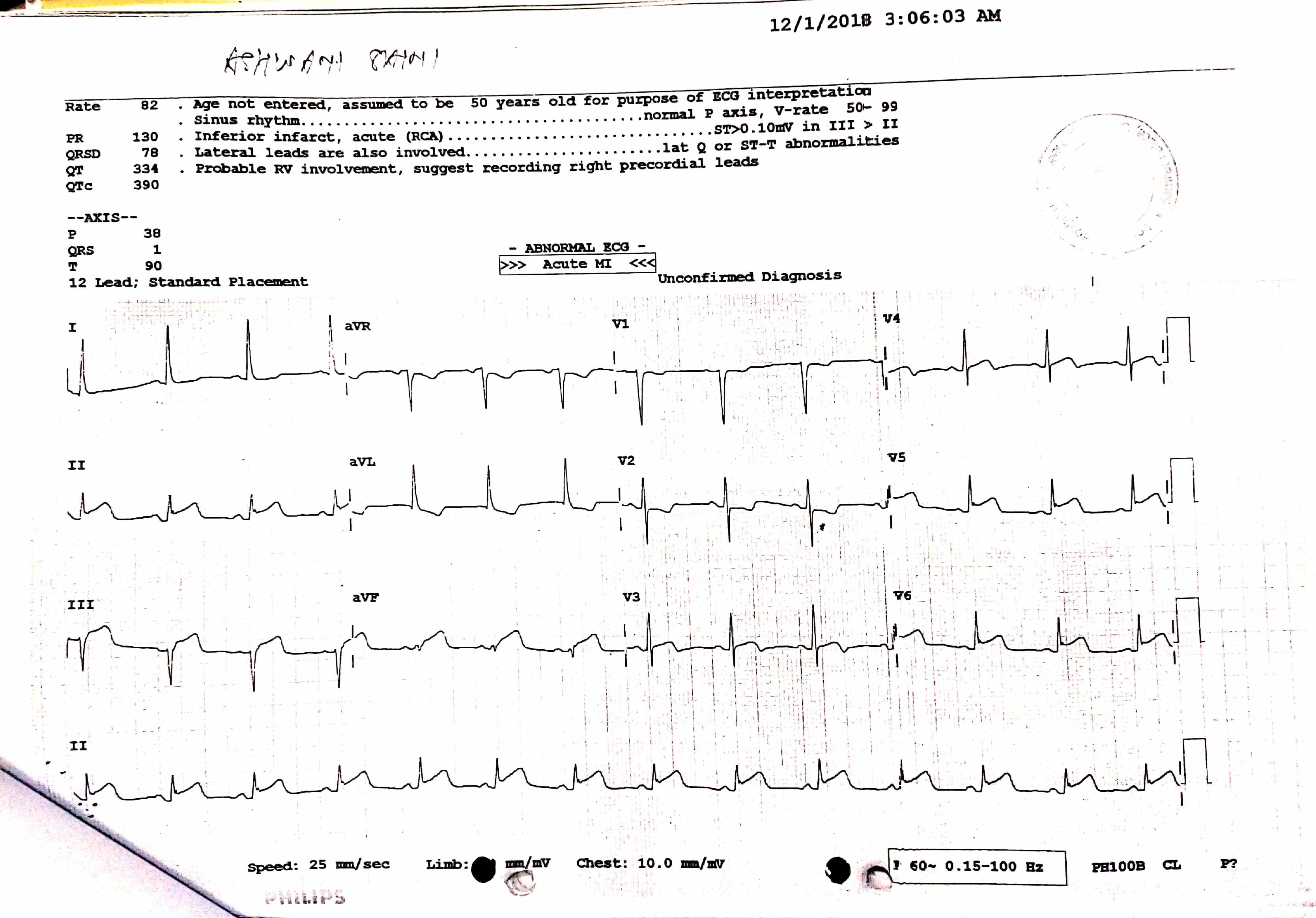 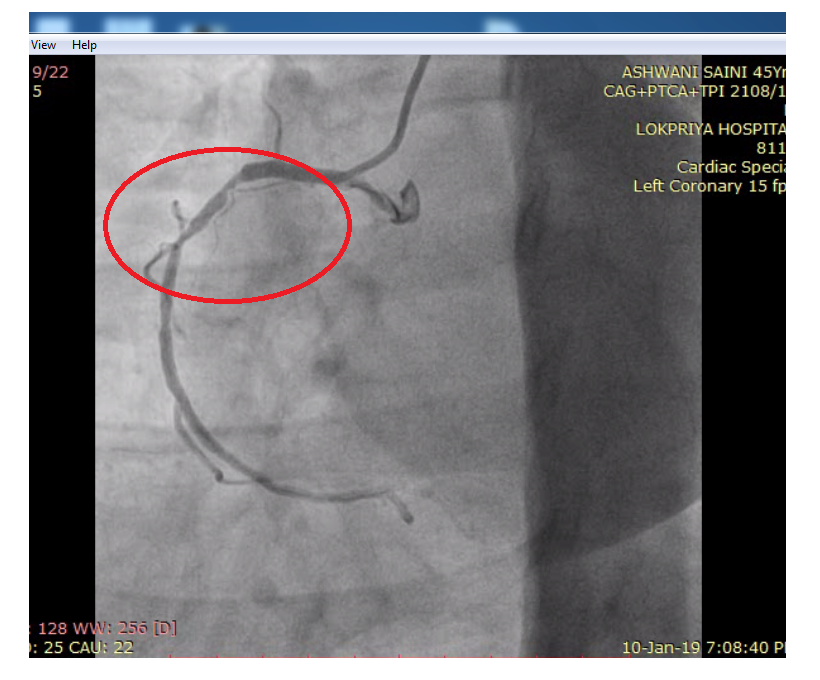 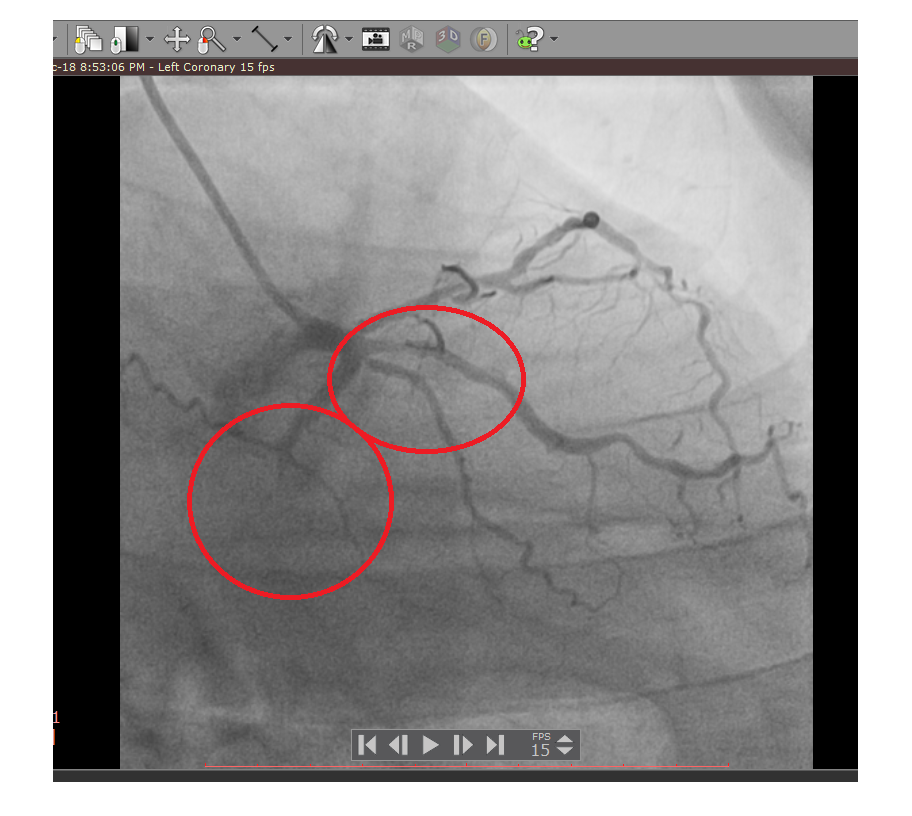 - Relevant catheterization findings:
Triple Vessel Disease: LAD: Ostioproximal to mid 60-70% disease, distal diffuse disease, D1 & D2: Diseased. Ramus: Proximal 80-90% disease. LCX: Proximal 100% occlusion. OM1: Ostial 90% disease. RCA: Dominant, Proximal 90% disease, mid 70-80% disease
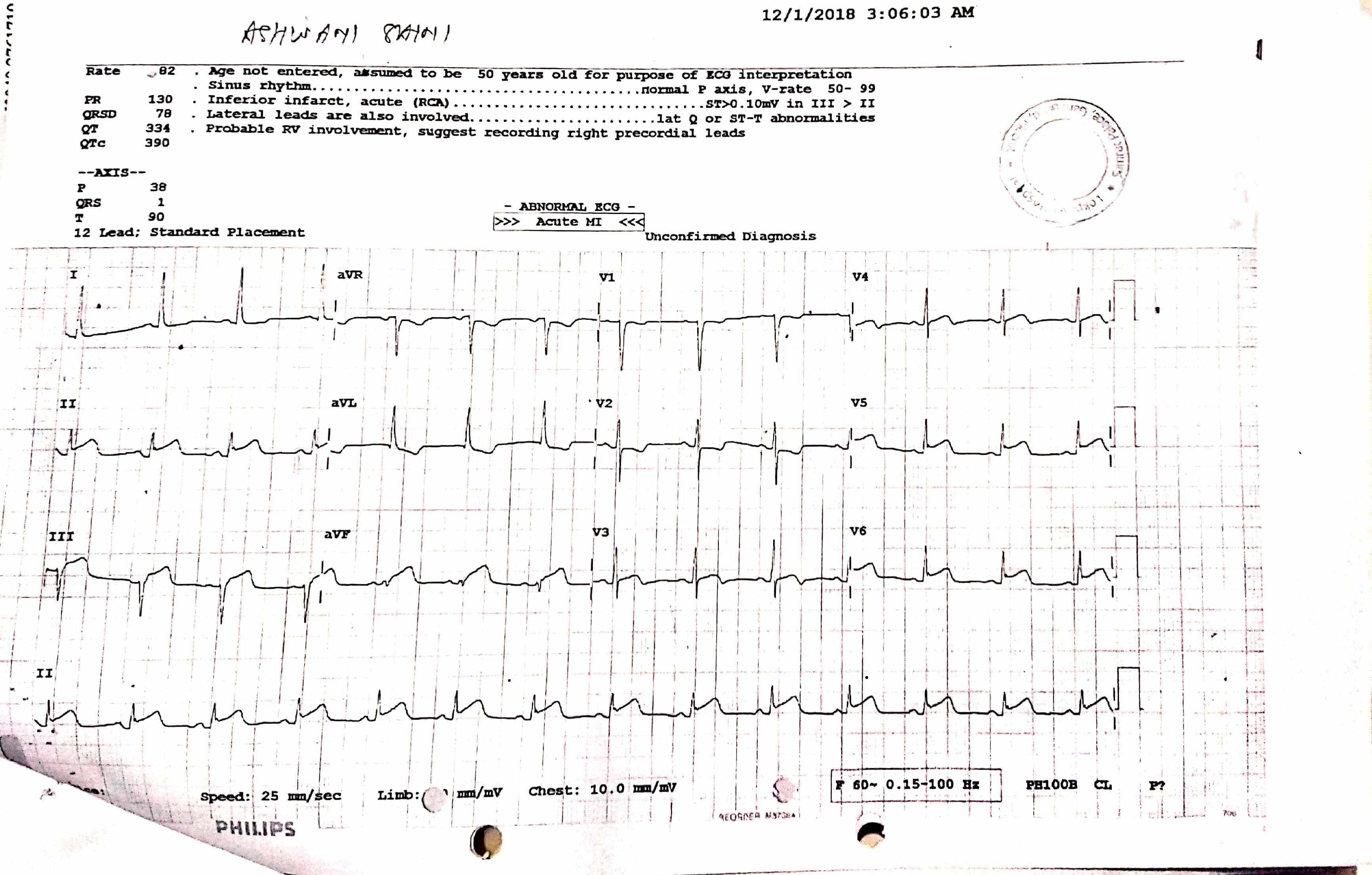  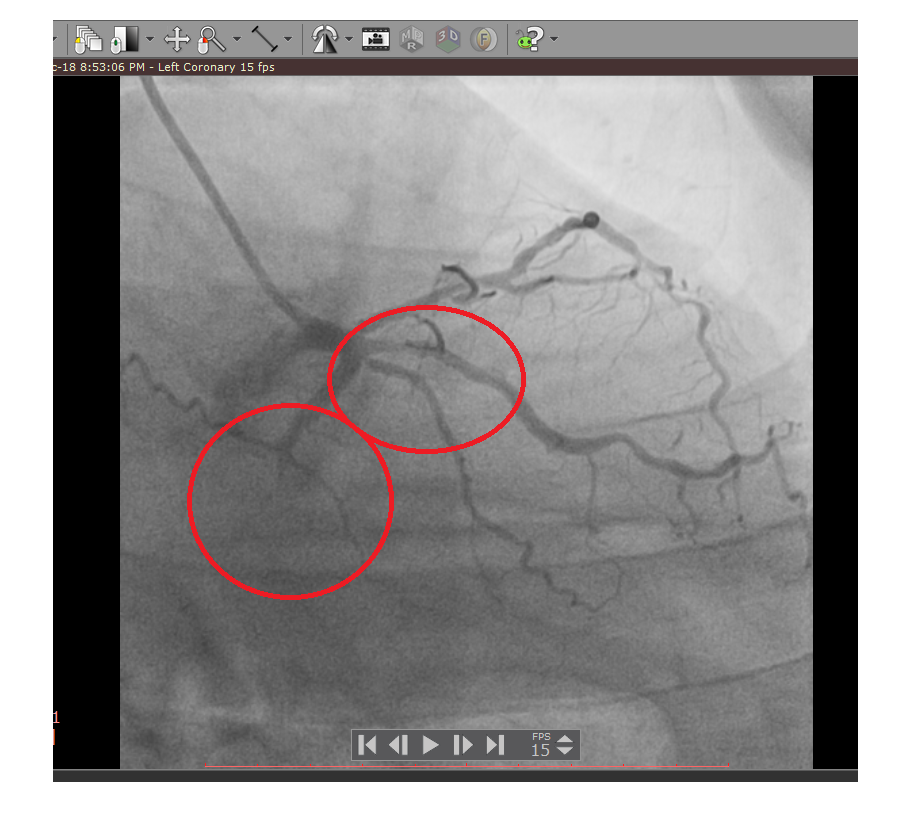 |
|
|
[Interventional Management]
- Procedural step:
PTCA TO LCX & OM : LeftCoronary Artery was engagedwith EBU 3.5, 6F guide catheter. A 0.014¡± SION BLUE wire was used to cross the LCX& OM lesion. Pre dilatation done with SC sapphire balloon 2.0
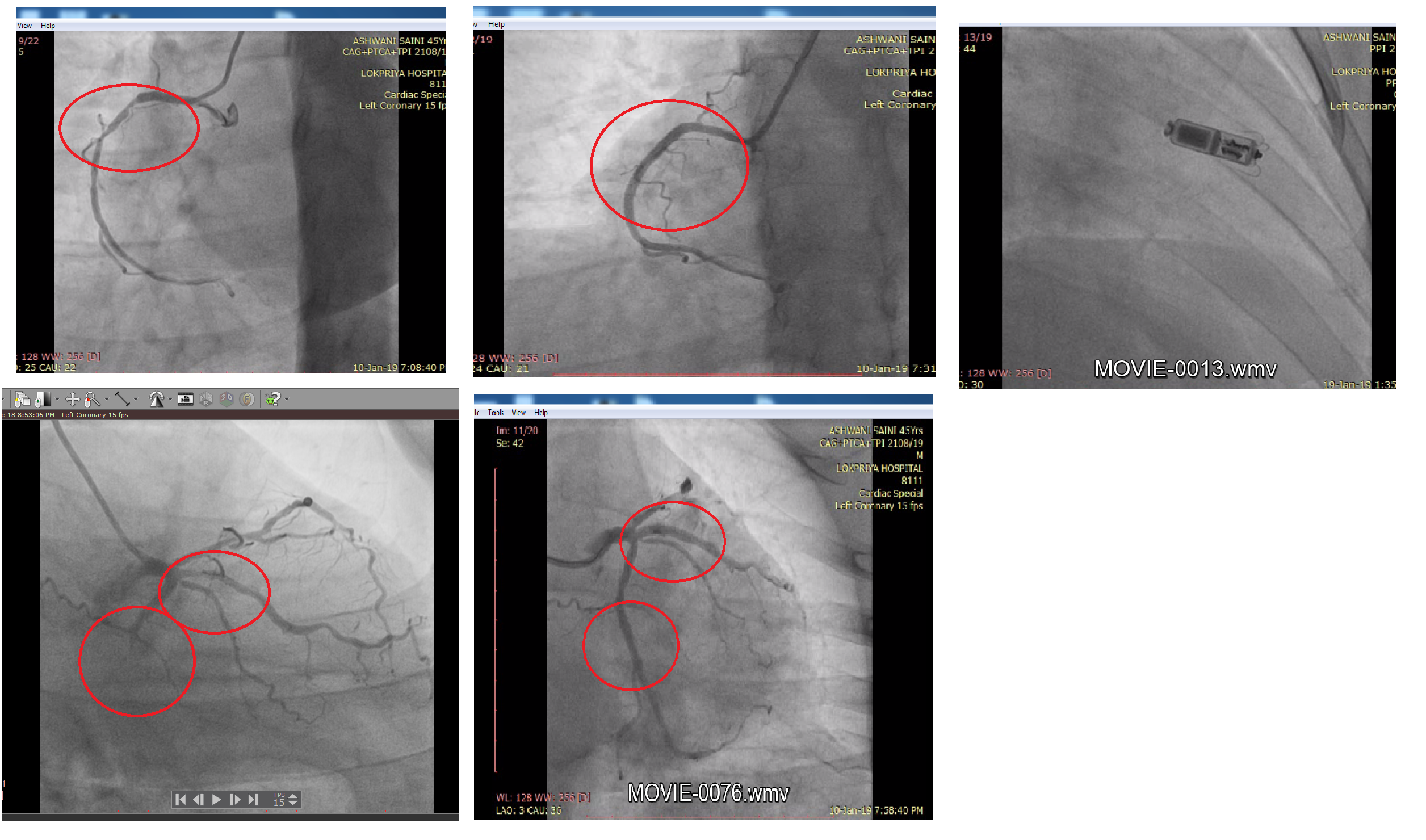 - Case Summary:
wepresent a case of symptomatic and profound AV node dysfunction in a patienttreated with ticagrelor post-PCI for Inferior Wall MI. This was observed in ourpatient even in the absence of baseline conduction disease or concurrentconfounding medications, unlike most cases in the published literature andhighlights the need for broader awareness of ticagrelor¡¯s not-insignificantbrady-arrhythmic potential.
|
|